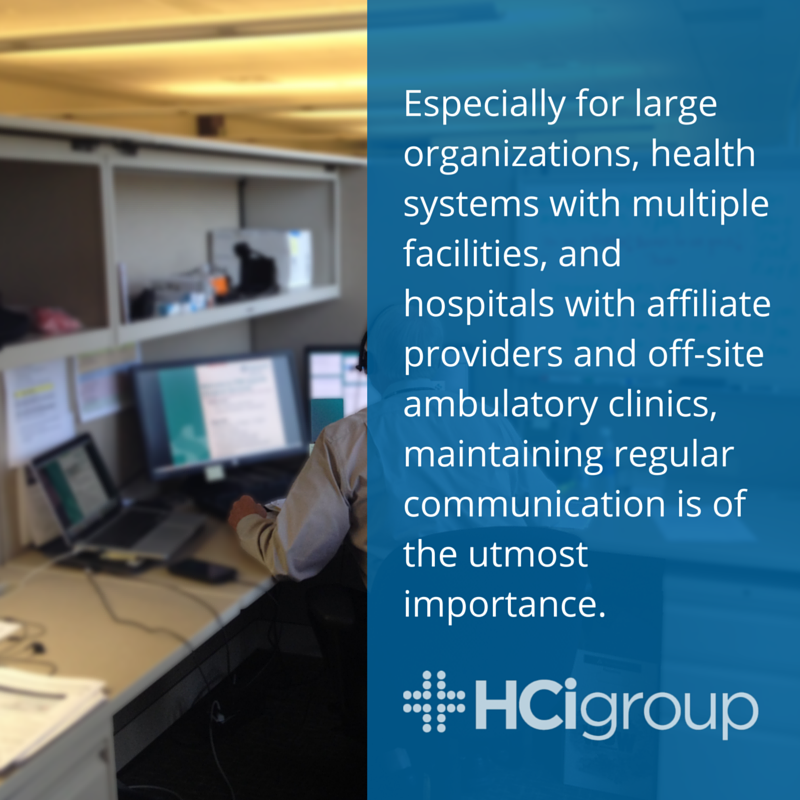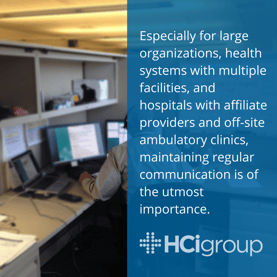Go-Live Support: Operation Communication

Yesterday, we introduced our new blog series that will cover the various phases and elements of a Go-Live. If you missed the first post, you can read it here for  a quick summary of the different topics we’ll be covering in the series.
a quick summary of the different topics we’ll be covering in the series.
With the help of David Chou (#1 Social Healthcare CIO), Stephen Tokarz (VP, Training and Activation), and Bob Steele (EVP, Clinical Services), we’ll be discussing the first Go-Live topic in this series: Operation Communication.
As with any project that requires teamwork, effective communication is critical to the success of your Go-Live. While your individual staff members and project teams manage their separate duties, it is necessary that the organization as a whole maintains constant communication to ensure that project functions stay in-sync.
This brings us to the first important rule of effective communication:
1. Open Communication Channels Are Key During Go-Live
Especially for large organizations, health systems with multiple facilities, and hospitals with affiliate providers and off-site ambulatory clinics, maintaining regular communication is of the utmost importance. Similarly, the same rule applies to smaller and single-site organizations, as you will need to be sure that the various departments and project teams are on the same page.
To guarantee that you’re ready for the big day, double check that you have prepared:
- Email groups
- Distribution lists
- A daily update schedule
- Cell phones
- Video conferencing capabilities at each command center
What's the worst that could happen? Check your phones....
At a recent Go-Live, an organization made sure to supply all support staff, end users/providers, and 3rd party vendor resources with cellphones, to ensure that everyone involved was easy to reach if necessary. Of course, this is a step in the right direction and something that all organizations should do. However, what they had not prepared for was that the network carrier they selected did not get service within their facility. Because the phones weren’t tested prior to the big day, the issue was not discovered until Go-Live kickoff. The process of switching out the phones and selecting a new network carrier caused serious delays and made communication exceedingly difficult, the consequences of which were lost time and money.
This is just one example of the types of problems you may run into if you don’t develop and test your communication channels before Go-Live.
2. Make Sure Your Go-Live Communication Plan Includes Everyone
With all of the different departments, project teams, and support staff members involved in a Go-Live, it’s easy to accidentally overlook important members of the project. As such, be sure that you include all of the following people/groups when laying out your communication plan:
- Leadership
- Support staff
- End Users/Providers
- Staff in off-site locations (when applicable)
- Third party vendor resources
Once you have checked and double-checked that all of the necessary people/groups are accounted for in your communication plan, be sure that they are included in each of the various communication channels discussed in the first point.
These may seem like small, common sense things; however, it’s often the little things that fall through the cracks that jeopardize the success of your entire project.
All of these areas are essential for creating a sound infrastructure and “communication cascade” prior to Go-Live. While effective communication is essential for just about any type of project, it is paramount during Go-Live, where the environment is rapidly changing and the stakes are highest for maintaining safe, quality patient care.
Stay tuned next week for the second topic of the series: Pre & Post Go-Live Planning. If you’re not signed up for our blog, click below to subscribe and receive the posts as they’re published.

